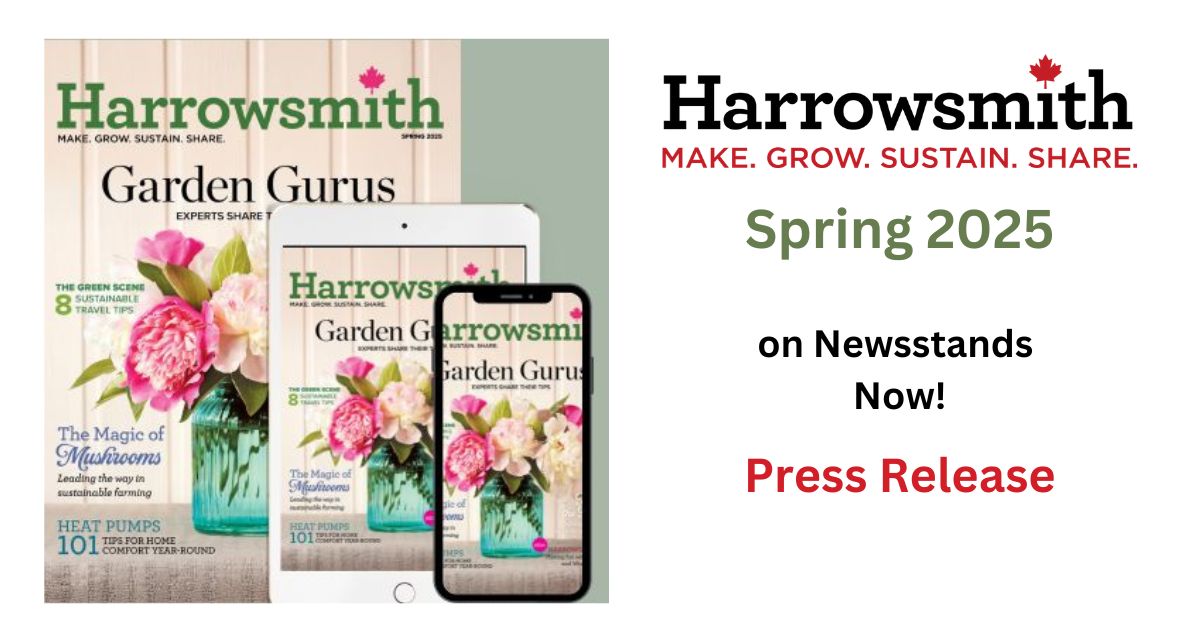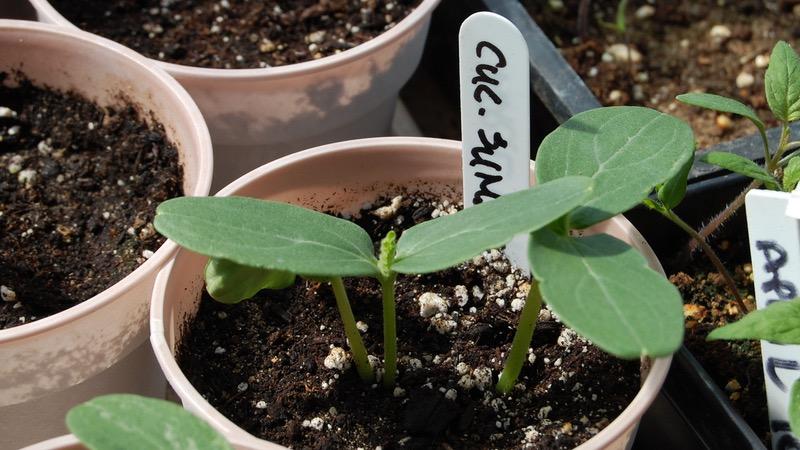A long, cold Canadian winter can be made considerably warmer and more interesting when you plan your garden with winter interest in mind.
Many plants may scarcely be noticed in spring and summer, when they provide the background against which showy annuals and perennials dazzle your eyes. In the winter, however, these background plants — evergreens, shrubs, trees and vines — take on a featured role thanks to their bark colour, berries and shapes. Even shrouded in a deep coat of snow, an evergreen or the dried seed head of a sunflower takes on new meaning. Views that were hidden by deciduous foliage during the growing months suddenly burst into prominence.
Winter is a great time of year for assessing your garden. During the winter months, you can see your garden’s bare bones: the patterns made by paths, gates, decks, fences, flower beds, shrubs and trees. As perennial plants die back and leaves fall from trees and shrubs, the relationship between space, plantings and objects in your garden changes.

An additional benefit of planning your garden at this time of year is that you will be more aware of adding winter colour and interest to your garden design than if you were to do it in the spring. Remember, too, that during the winter you will usually be viewing your garden only from the house. Your views will be restricted to those from your windows, so you want those views to be especially attractive in the winter. As you gaze out the window, reach for pencil and paper and start making notes.
Adding winter interest attracts animals, too
One source of pleasure in a winter garden will be the shapes and textures of the plantings on your property; another will be wildlife, especially birds.
We leave ornamental grasses and tall perennial seed heads standing through the winter. Ornamental grasses provide movement in the wind and texture all winter. Songbirds are attracted to seed heads that remain on perennial plants. While the birds are enjoying this natural source of food, you will enjoy the beauty of both the plants and the action that they create during an otherwise quiet time of year in the garden.
Supplement natural food sources with a few bird feeders and a bird bath with an electric ice melter. The sound of birds in the garden will draw you outside on calm winter days and keep you coming to your favourite windows to enjoy the view.
Bringing the outdoors in
Another benefit of a winter garden is natural, readily available decorations. If you are assessing your winter garden before the holidays, it is highly likely that you will want to decorate outdoors as well as indoors for the season. There are many natural items in your garden that lend themselves to a seasonal look that can be very attractive — not to mention save you money. Here are some of our favourites.



1. Holly “The Holly and the Ivy” are not figments of some songwriter’s imagination; they exist. Winter hardy (to Zone 4), blue holly has been around for a generation now and is a staple in many Canadian gardens. Don’t be afraid to cut stems during the winter, as no harm will be done. Note that female holly is the one that bears the fruit, a universal rule for asexual plants.
Ivy needs to be evergreen to be useful, and it is generally less hardy than blue holly. However, if you are lucky enough to have some, feel free to cut it down and use it around door frames and wind it up railings.
2. Evergreen branches This is big business. You can go to your local retailer and buy pine, fir, cedar and spruce branches at considerable expense or you can cut your own. Again, no harm done to your precious trees. There is no magic in this — just cut with a sharp pair of pruners and get creative with the use of the stems, inside and out.
3. Berries Many plants produce berries or berry-like fruit in late fall. For the most part, they remain on the plant until late winter, when foraging birds clean them off come February and March. Crabapples, mountain ash, bittersweet vine (Celastrus scandens), euonymus and even roses can produce great-looking fruit that is useful outdoors in containers and as decoration on the Christmas table.



4. Dogwood The red twig dogwood is a weed plant to many farmers, as it grows almost anywhere that you find lingering moisture, especially in low land. When you cut native dogwood down by a metre or so, it grows back up aggressively in a year. The bright red bark of dogwood stands out in an outdoor arrangement, will not wither, and stands up to any amount of frost. It is one versatile decorating accessory.
5. Birch This one is a bit tricky, as we would not recommend that you cut down your birch tree just to decorate at your front door. Unless, of course, you were cutting it down anyway. Again, there is no magic in the birch branches that you find at retailers through the winter. They are cut from two- to three-year-old trees, and then plants are dug up and replanted. Like a Christmas tree crop: sustainable and renewable.
6. Willow Another aggressive plant in the garden that we don’t normally recommend unless you live on a large property. Pussy willow (Salix discolor) and Arctic willow (Salix arctica) both provide the raw material of a great display out of doors. They are unique in that they are very flexible. If you are clever, you can twist and weave them into wreaths and baskets, or just braid them into a “rope” that will look great on the fireplace mantel.
From holiday decorations to windows with a view, the joys of a winter garden promise soothing, handsome sights and sounds, all season long.
Our Favourite Deciduous Plants for Winter Interest
White paper birch (Betula papyrifera) A deciduous tree that grows up to 30 metres (98 feet) tall. Valued for its decorative bark, which is coppery brown when young, turning white with age. Hardy to Zone 2.

Pin oak (Quercus palustris) Great fall colour with leaves turning bronze or red. Retain their leaves through the winter. Hardy to Zone 4.
Red osier dogwood (Cornus sericea ‘Cardinal’) Deep red branches are a great winter accent. Popular in outdoor urns and window boxes for seasonal decoration in winter. Best grown in rich, moist soils in full sun to part shade. Hardy to Zone 2.
Yellow twig dogwood (Cornus sericea ‘Flaviramea’) Dogwoods can be grown in full sun to partial shade. When grown in full sun, the colour of the bark is brighter and more intense. Golden yellow colour of branches adds interest to the winter garden. Hardy to Zone 3.
Paperbark maple (Acer griseum) Copper-coloured peeling bark is used decoratively year-round. Grows well in sun or part shade. Hardy to Zone 4.
Burning bush (Euonymus alatus ‘Compactus’) Also known as winged euonymus for its winged bark, which flares out along its branches. Well known for its striking red leaves in the fall. Hardy to zone 4.

Evergreen Plant Suggestions for Winter Interest
Boxwood (Buxus) A great choice for a low hedge. Can also be grown as a single specimen for green accents throughout the landscape. Boxwoods tolerate annual pruning in formal settings. Hardy to Zone 5.
Euonymus (Euonymus fortunei) There are several evergreen varieties of euonymus. These shrubs are very easy to grow and have many uses. Plant in full sun to part shade. Hardy to Zone 5.
Cotoneaster (Cotoneaster sp.) Hardy, fast-growing shrubs with interwoven branches. Berries ranging from bright red to orange add interest to the shrubs from autumn through winter. Hardy to Zone 4.
Emerald cedar (Thuja occidentalis ‘Smaragd’) An upright evergreen shrub that retains its bright emerald green colour throughout the year. Hardy to Zone 3.
Purple winter creeper (Euonymus fortunei ‘Coloratus’) A dense, broadleaf evergreen that comes in a variety of forms. Often grown as a trailing ground cover. Versatile plant for sunny or shady locations. Hardy to Zone 4.

Mark Cullen is an expert gardener, author, broadcaster and tree advocate
and holds the Order of Canada. His son, Ben, is a fourth-generation
urban gardener and a graduate of the University of Guelph and Dalhousie
University in Halifax. Follow them at markcullen.com, @MarkCullen4
(Twitter) and @markcullengardening (Facebook) and look for their latest book, Escape to Reality.
Follow them at markcullen.com, @MarkCullen4, facebook.com/markcullengardening and biweekly on Global TV’s national morning show, The Morning Show.













